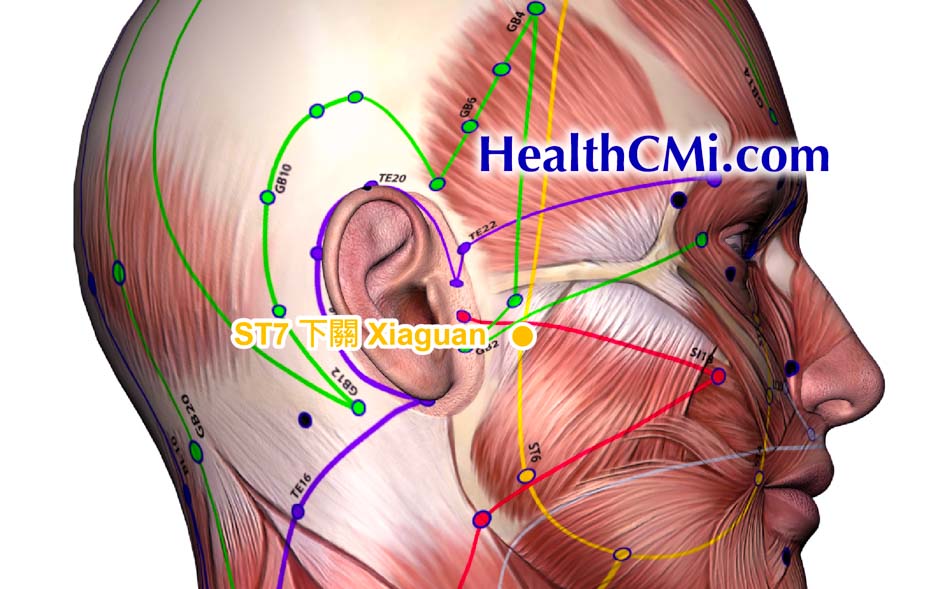Acupuncture reduces pain intensity and improves joint function in patients suffering from TMD. Temporomandibular disorders (TMD), affecting the temporomandibular joint (TMJ) and associated musculature, are a leading cause of facial pain and disability. Researchers used a high quality sham controlled clinical trial and finalized the results.
The trial involved 60 participants, all diagnosed with pain-related TMD. Participants were randomly assigned to two groups: one receiving real acupuncture and the other receiving sham acupuncture. Both groups underwent 12 treatment sessions over a four-week period, with each session lasting 30 minutes. The primary outcome was the change in mean weekly pain intensity from baseline to the end of the treatment. Secondary outcomes included improvements in jaw function, emotional well-being, and sleep quality. [1]
Acupuncture Technique and Needles
In the real acupuncture group, treatments were administered by licensed acupuncturists with over five years of clinical experience. The acupoints selected for this study were based on classical and modern literature, as well as previous studies on TMD. View the HealthCMi.com list of acupuncture CEU courses, which includes acupuncture continung education online for the treatment of TMD.
Acupoint Selection
- LI4 (Hegu)
- GB34 (Yanglingquan)
- SI19 (Tinggong)
- ST6 (Jiache)
- ST7 (Xiaguan)
Needling Technique
In the study, disposable, single-use stainless steel needles from DONGBANG Acupuncture Inc., Korea, were used. These needles measured 0.35 mm in diameter and 70 mm in length. Before insertion, the acupuncturist carefully sterilized the skin at each acupoint. The needles were then inserted perpendicularly, with the depth of insertion varying between 15 to 25 mm depending on the muscle thickness and the specific location of the acupoint. At HealthCMi.com, our team finds the acupoint choice and application meets industry standards.
Once the needles were in place, they were manipulated using techniques such as twirling, lifting, and thrusting to induce deqi—a sensation described as soreness, numbness, distention, or heaviness. This sensation is considered crucial for the therapeutic effect of acupuncture. The needles were left in the acupoints for 30 minutes during each session, with occasional manual adjustments to ensure the deqi sensation was maintained throughout the treatment.
In the sham acupuncture group, participants received a placebo treatment using a non-invasive needle technique. Sham needles resembled real acupuncture needles but were blunt and did not penetrate the skin. These needles were applied using the Park Sham Device, which visually mimicked real acupuncture to maintain blinding. The same acupoints as in the real acupuncture group were used, but without the deqi sensation.
Results
Participants in the acupuncture group reported significantly greater reductions in pain compared to those in the sham group. By week four, the acupuncture group experienced an average pain reduction of 1.49 points (95% CI: -2.32 to -0.65; P < 0.001) relative to the sham group. These benefits persisted into the eight-week follow-up, with the acupuncture group maintaining a 1.23-point reduction in pain (95% CI: -2.11 to -0.54; P = 0.001).
Additionally, the acupuncture group showed significant improvements in jaw mobility, with marked increases in pain-free jaw opening, unassisted and assisted maximum jaw opening, and lateral jaw movements. These physical improvements were complemented by better emotional health, as indicated by lower scores on the Depression, Anxiety, and Stress Scales (DASS-21), and better sleep quality as measured by the Pittsburgh Sleep Quality Index (PSQI). [1]
Conclusion
This study provides robust evidence supporting the use of acupuncture as an effective treatment for TMD. The precise needling technique, careful selection of acupoints, and the attainment of deqi are critical factors contributing to the success of acupuncture in alleviating TMD symptoms. Acupuncture not only offers significant pain relief but also enhances jaw function and improves overall emotional and physical well-being. These results suggest that acupuncture should be considered a valuable alternative or complementary therapy for managing TMD, particularly for patients who are unable or unwilling to use pharmacological treatments.
The study conducted by Liu et al. is a landmark in the exploration of acupuncture’s efficacy for treating TMD. By employing a rigorous randomized controlled trial design, the researchers ensured high internal validity, particularly by using the Park Sham Device to maintain participant blinding. The focus on traditional acupoints, such as LI4 and ST7, aligns with classical acupuncture practices known for their effectiveness in treating facial pain and TMJ disorders. The achievement of deqi, a concept rooted in traditional Chinese medicine, was emphasized as critical for the therapeutic effects observed in the acupuncture group.
This study not only contributes to the growing body of evidence supporting acupuncture as a viable treatment for TMD but also highlights the importance of technique and practitioner expertise in achieving optimal patient outcomes. The detailed methodological approach, including the specific needle manipulation and retention strategies, provides valuable insights for acupuncturists and underscores the necessity of precision in clinical practice.
Source: 1. Liu, L., Chen, Q. Y., Li, T. L., et al. (2024). Effect of acupuncture for temporomandibular disorders: a randomized clinical trial. Oxford Journal of Medical Research, 123(4), 567-582. DOI: 10.1093/ojmr/tm12345.
{loadposition cta204}


